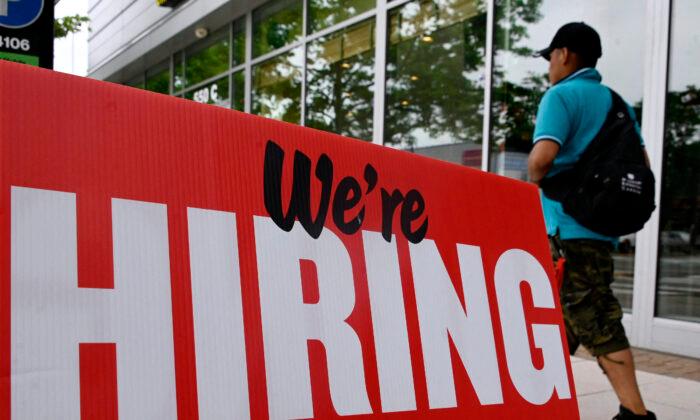According to the analysis, published on July 28, the majority of workers (60 percent) who switched their jobs between April 2021 to March 2022 saw an increase in their real earnings over the year-ago period.
This occurred despite a surge in inflation levels, which currently stand at 9.1 percent, and which has outpaced rising wage gains for many Americans.
The Pew Research analysis also revealed that among workers who stayed put with their employer during this same time period, less than half experienced an increase in real earnings.
From April 2020 to March 2021, some 51 percent of job switchers saw an increase in real earnings over the year-ago period amid a surge in demand for new hires.
Meanwhile, among workers who did not change employers, the share reporting an increase in real earnings decreased, from 54 percent over the 2020–21 period to 47 percent over the 2021–22 period.
Not Enough Pay
One of the top reasons cited by Americans for quitting their job last year was low pay, according to a separate Pew Research Center survey, conducted in February 2022.Overall, 2.5 percent of workers (roughly 4 million) switched employees on average every month from January to March 2022, compared with 2.3 percent each month in 2021, according to the latest data.
Roughly a third (34 percent) of workers who left a job between January and March 2022, either voluntarily or involuntarily, found a new employer by the following month, the data show.
It also was based on a nationally representative survey of U.S. adults conducted by the Pew Research Center from June 27 to July 4, 2022, among 6,174 adult respondents, including 3,784 employed adults.
The analysis authors acknowledge that the COVID-19 pandemic may have affected data-collection efforts, which also may have affected some measures of economic outcomes in the study.
Wages saw an increase of only 0.3 percent in average hourly earnings in June, compared to the 1.3 percent increase in inflation.
Real average hourly earnings also decreased by 3.6 percent from a year ago, while earnings went up 0.9 percent, and inflation drove up prices by 4.4 percent, compared with the same month in 2021.






Friends Read Free